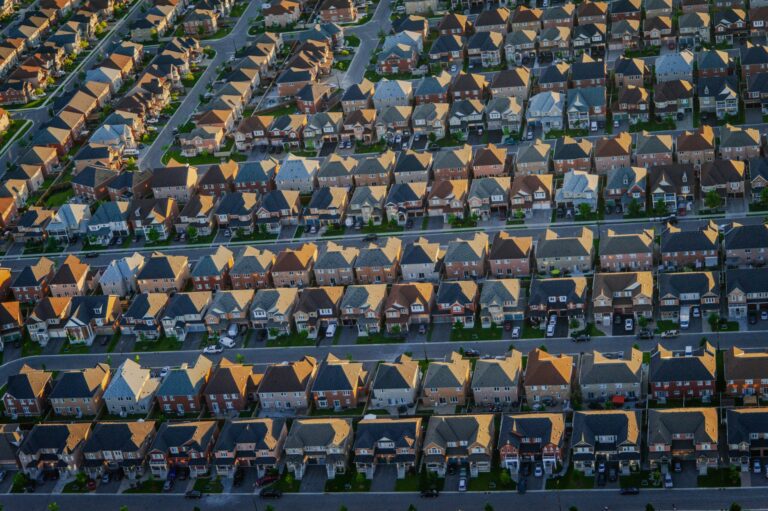As of April 2024, a significant shift is taking place in the commercial real estate (CRE) market across the United States. Businesses are increasingly moving away from traditional urban centers in favor of suburban office spaces. This change, driven largely by the continued adoption of hybrid work models, is reshaping the commercial real estate landscape. Suburban areas are becoming more attractive due to lower costs, ample parking, and a better overall quality of life for employees. These factors have led to a surge in demand for suburban office spaces.
The Hybrid Work Model: A Driving Factor
One of the primary factors behind this shift is the widespread adoption of hybrid work models, which gained momentum during the pandemic and have continued to be a long-term trend. Hybrid work allows employees to divide their time between working remotely and coming into the office. This flexible approach reduces the need for large office spaces in downtown areas, which have traditionally been expensive and less accommodating to remote work practices.
According to recent surveys from real estate firms like CBRE and JLL, companies are now seeking smaller, more flexible office spaces that are closer to where their employees live. As businesses no longer require massive headquarters in urban areas, suburban offices are emerging as the ideal solution. Suburbs offer not only financial savings but also the convenience of less crowded environments and easier commutes.
Financial Benefits of Suburban Locations
Suburban commercial properties have long been more affordable than their urban counterparts, and this price disparity is one of the key reasons businesses are increasingly opting for suburban offices. Rent prices in suburban areas are typically 20% to 30% lower than in major metropolitan cities. This cost-saving opportunity allows businesses to allocate their budgets toward other priorities, such as expanding operations or improving employee benefits.
In addition to lower rent, suburban areas also provide ample parking, which has become a crucial factor for businesses that require employees to come into the office. In urban centers, parking can be scarce and expensive, making it a significant burden for both companies and employees. Suburban office spaces, on the other hand, often come with large parking lots or garages, making them more convenient for employees who commute.
Lifestyle Benefits for Employees
The shift toward suburban office spaces is not only financially beneficial for companies but also aligns with employee preferences. Suburbs offer a better quality of life, with access to larger homes, safer neighborhoods, and highly-rated school districts. Many employees, particularly those with families, are prioritizing these factors when deciding where to live and work.
Data from the U.S. Census Bureau and real estate reports show a trend of families moving out of crowded city centers to suburban areas in search of more space and a higher standard of living. For employers, establishing offices in these suburban markets helps attract and retain top talent, particularly as more employees value work-life balance and a less stressful daily commute.
Case Study: Houston’s Suburban Commercial Real Estate Surge
A clear example of this suburban commercial real estate surge is seen in Houston, Texas. Recently, Capital Commercial Investments acquired a large suburban office building for $18.2 million, a significant decrease from its previous valuation of $130 million. The building, once owned by Chevron, had been vacant for some time due to a lack of demand for traditional office spaces in downtown Houston.
This deal is part of a larger trend in which companies are targeting suburban areas with growing residential populations, particularly those with strong school districts and easy access to transportation. Houston’s suburbs like The Woodlands, Sugar Land, and Katy have all seen increased commercial real estate activity as businesses shift away from urban centers. These areas offer a mix of affordable office space, residential growth, and a high quality of life, making them prime locations for businesses looking to relocate or expand.
Landlord Adaptations and Market Trends
In response to the growing demand for suburban office spaces, landlords are reevaluating their leasing strategies and making significant investments in suburban properties. Landlords are upgrading office buildings to be more flexible and appealing to businesses with changing needs. Many properties are being repurposed to include collaborative workspaces, flexible layouts, and modern amenities like high-speed internet and conference rooms equipped with the latest technology for virtual meetings.
Additionally, landlords are adjusting their leasing terms to meet the needs of businesses that are still navigating the shift toward hybrid work. Shorter-term leases, co-working spaces, and flexible office solutions are becoming more common as businesses seek to avoid long-term commitments while their real estate needs evolve.
Long-Term Outlook for Suburban Commercial Real Estate
The demand for suburban commercial real estate is expected to remain strong in the coming years. As businesses continue to embrace hybrid work models and employees prioritize suburban living, suburban office spaces will likely become a permanent fixture in the commercial real estate landscape.
Experts in the commercial real estate industry, such as those at CBRE and Colliers, predict that suburban office spaces will continue to offer attractive financial and lifestyle benefits. With lower costs, more space, and a better quality of life for employees, suburban areas are becoming an increasingly popular choice for companies looking to meet the demands of the modern workforce.
Conclusion
The shift toward suburban commercial real estate demand, which became evident in 2024, is more than just a passing trend—it reflects a fundamental change in the way businesses operate. Hybrid work models, financial incentives, and lifestyle preferences are all playing a role in this transformation. As suburban office spaces become more desirable, businesses and landlords alike are adjusting to accommodate this new normal. With the trend likely to continue, suburban commercial real estate is set to remain a strong component of the U.S. commercial property market for the foreseeable future.
